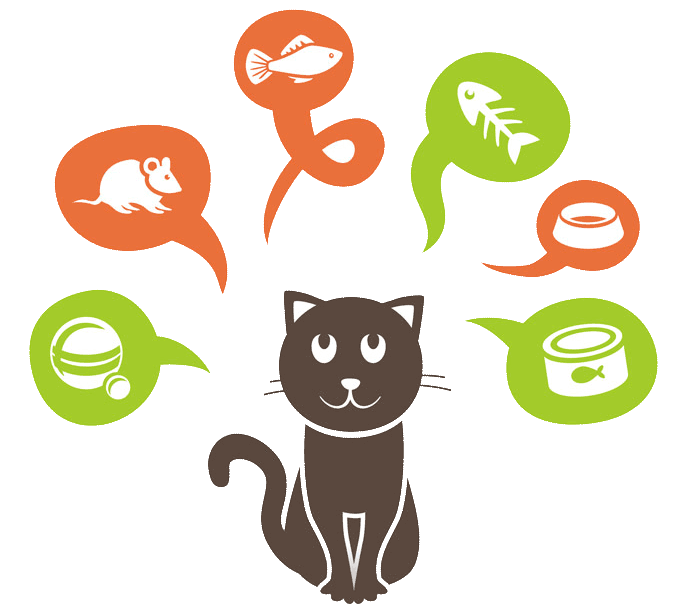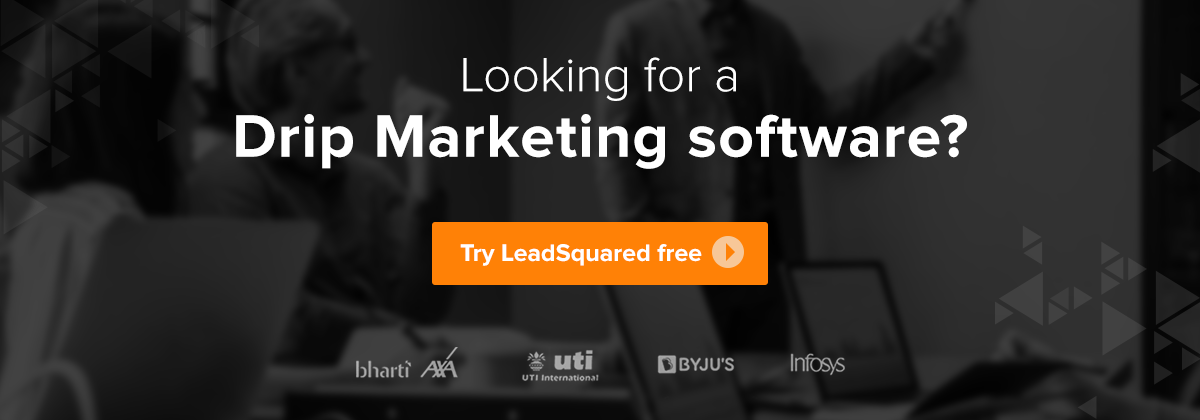Drip Marketing is any marketing communication broken down into bits and spread across an extended period to gently nudge the prospect to take an action, instead of selling point-blank.

So, MeowCart recognized that Mr. Fluffyface was interested in buying his favorite food, he just forgot to hit “Buy.”
An email was triggered reminding him to finish his purchase, which got them not just one sale, but a regular customer too. Now he acts on almost all their triggered emails!
That’s what is drip marketing.
Let me give you a couple of more examples for clarity.
The emails you get when you browse Amazon, but don’t buy anything – that’s drip marketing automation, much like what happened in the first email that Mr. Fluffyface received.
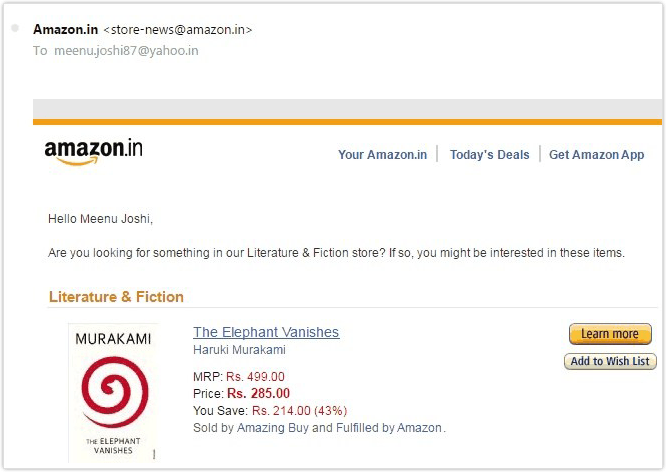
When you subscribe to a course, you get emails with course videos, quizzes etc. – that’s drip automation too:
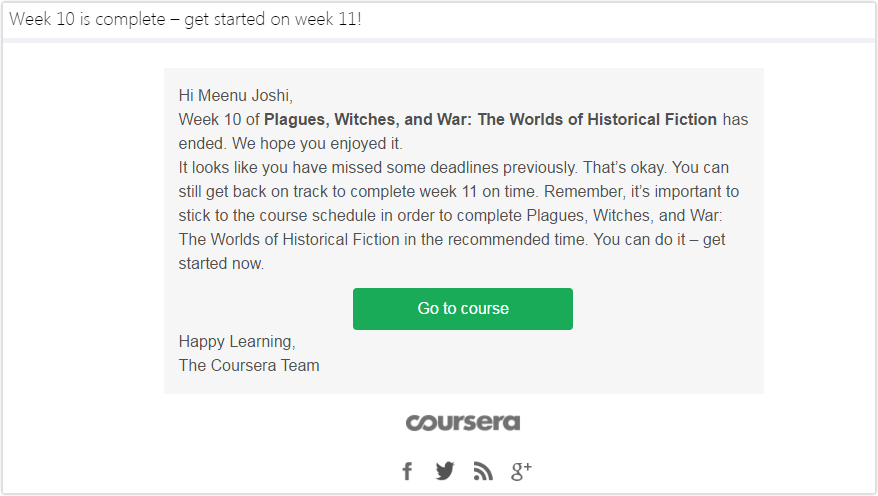
Hope that clears it a bit?
So, when you do drip marketing, you don’t try to sell in the first interaction, not even on the second.
“You track your prospect’s behavior, send them bits of content they’d find interesting, and sell only when they are perfectly ready to buy, based on their actions.”
What are the most important features of drip marketing?
a) It is super relevant
Each lead is unique – they are individuals, with opinions, preferences, likes and dislikes. You cannot ignore that when you communicate with them. So, even after Mr. Fluffyface is clearly interested in cat-food, this shouldn’t happen:
This is bad targeting. This is what drip marketing automation aims at eliminating.
b) It is personalized
Drip marketing engages your leads in a highly-personalized manner. It isn’t spray and pray, it’s drip and grip. (Sorry!)
It takes into consideration the interests of your leads, and is triggered based on their activities, instead of sending the same generic message to everyone.
Kind of like how Amazon does things.
I looked up “Fullmetal Alchemist” on Amazon, but didn’t buy it. In sometime, I received this email.
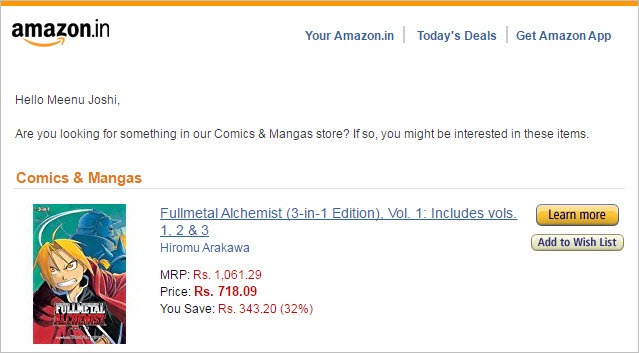
“To market like Amazon is every marketer’s aspiration, and their drip marketing workflows are a strong reason why.”
You obviously know that these messages are automated. But, because they are personalized based on the recipient’s interests, they are highly effective – in catching the recipient’s attention, being opened, and making a sale.
c) It is based on user behavior
Just last month I got a Kindle from my brother. Within 15 minutes, I had downloaded the Kindle versions of all the books in my reading-list (the ones that I found free). The next email I got in my inbox was this.
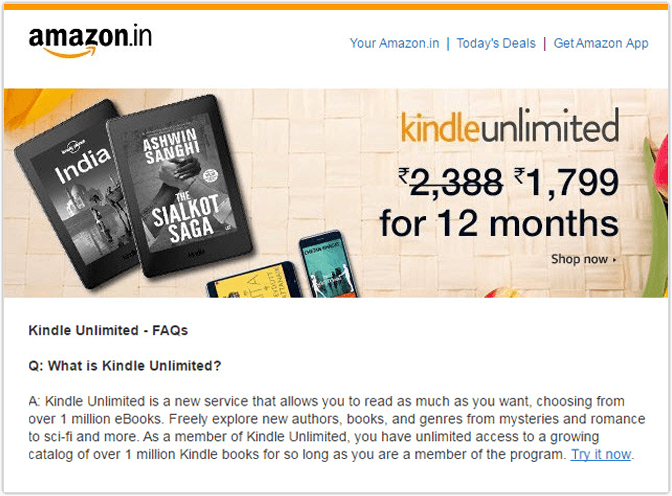
Then again, because I didn’t check this email, I had the following email in my inbox, after 8 days. A 1-month free subscription to Kindle Unlimited:
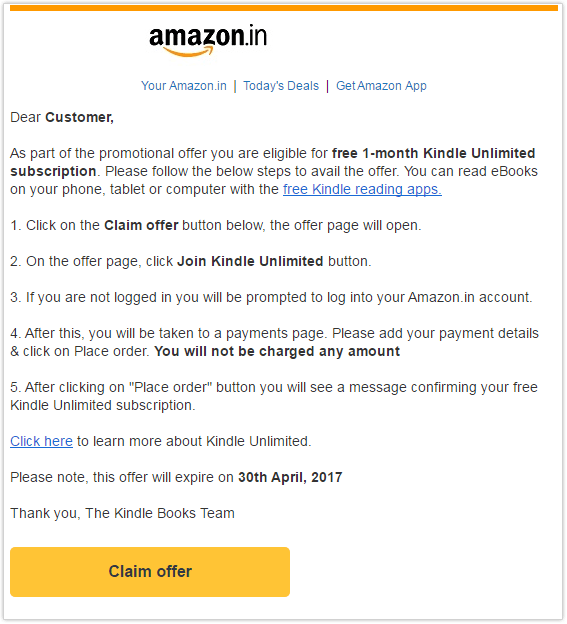
Now, the chances that I would subscribe for a free month are higher, and then after a month, there’s a good chance that I’d buy the 12-month subscription – conversion!! (this is exactly what I did with Amazon Prime).
d) It is pre-written
These workflows are pre-defined and the emails pre-written. You aren’t writing a new email every single time a new prospect is interested in what you are selling. They just enter your pre-existing workflow.
e) It is automated and sent on a schedule
Of course, by now it’s clear that drip marketing is automatically triggered.
The trigger can be any action – (buying a book, completing a purchase, signing up for a product free trial, subscribing to a blog etc.) or inaction (not completing the purchase, not clicking an email, not using the app for a month etc.). The simplest trigger is passage of time (ex: a ‘Help’ email goes out 3 days after the user signs up for a product).
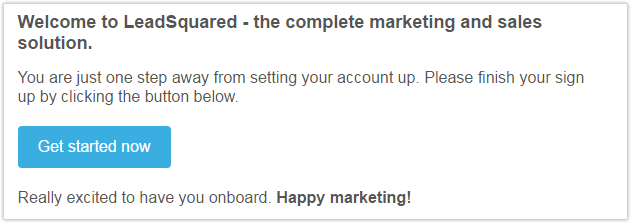
What are the key elements of a drip marketing campaign?
You know that drip marketing is a pre-defined, pre-written chain of emails. So, in order to plan a good automation campaign, you need to understand a few elements. Now, what you call these elements depends on the drip marketing software you are using, but the essence and the function of these elements remains the same.
-
Triggers
These events cause the entry of a lead into a drip workflow, or a lead’s movement down the funnel at a later stage. The Triggers can be anything from the creation of a lead, a first-time user registering on your online store, someone subscribing to your blog, or someone leaving an item unpurchased in their shopping cart.
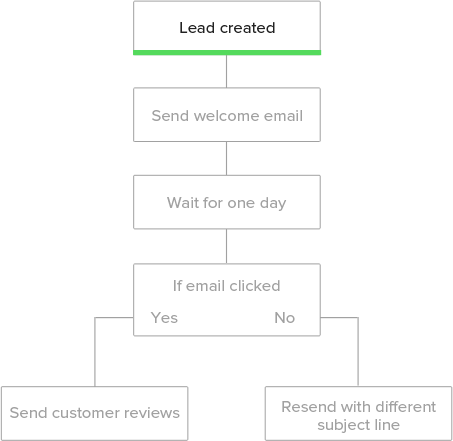
-
Conditions
While triggers set the drip campaign in motion, some Conditions might need to be met for the engagement actions (emails in this case) to begin. Example of a condition is: After a lead is created wait for 3 days to send him the first email, or after the 1st email has been sent out wait for the lead to click on a particular link of the email to send out the 2nd email.
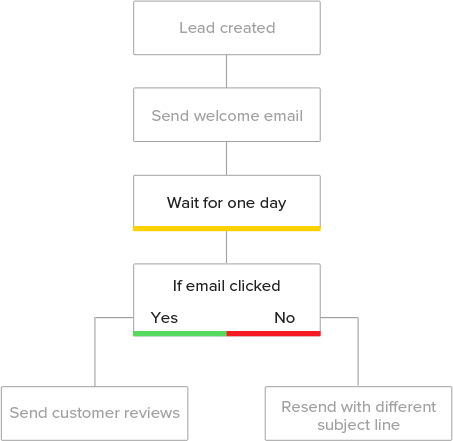
-
Actions
These are the actual engagement elements – automated emails in this case. The Customer Review emails that go out to the prospective travelers when they express an interest in a travel package (marketing automation), the cart abandonment emails (e-commerce email automation), or the movement of a lead down the sales funnel when they have a positive phone call (sales automation), are all Actions. In case of drip marketing, they will be emails, SMSs, or social media messages.
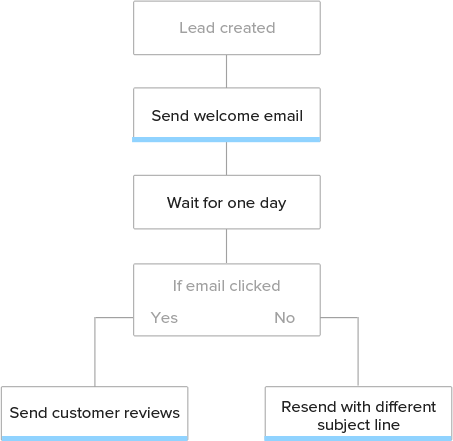
Now that we understand what drip marketing is, what makes a campaign a drip marketing campaign, and what are the major elements of a drip marketing campaign, let’s move on to the benefits of drip marketing campaigns and why should you use them.





